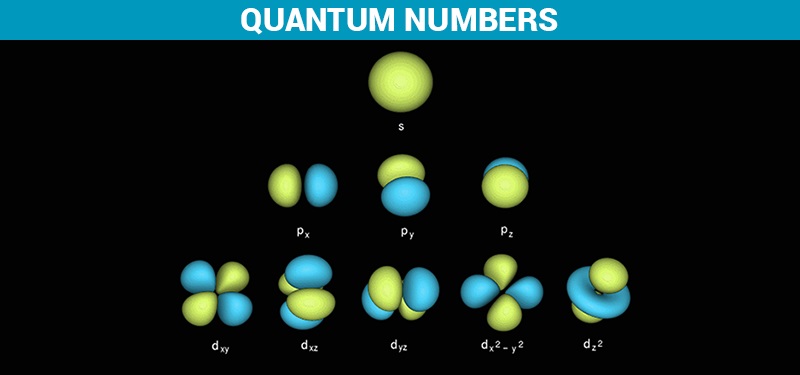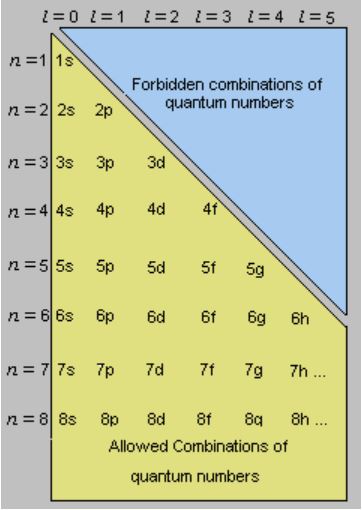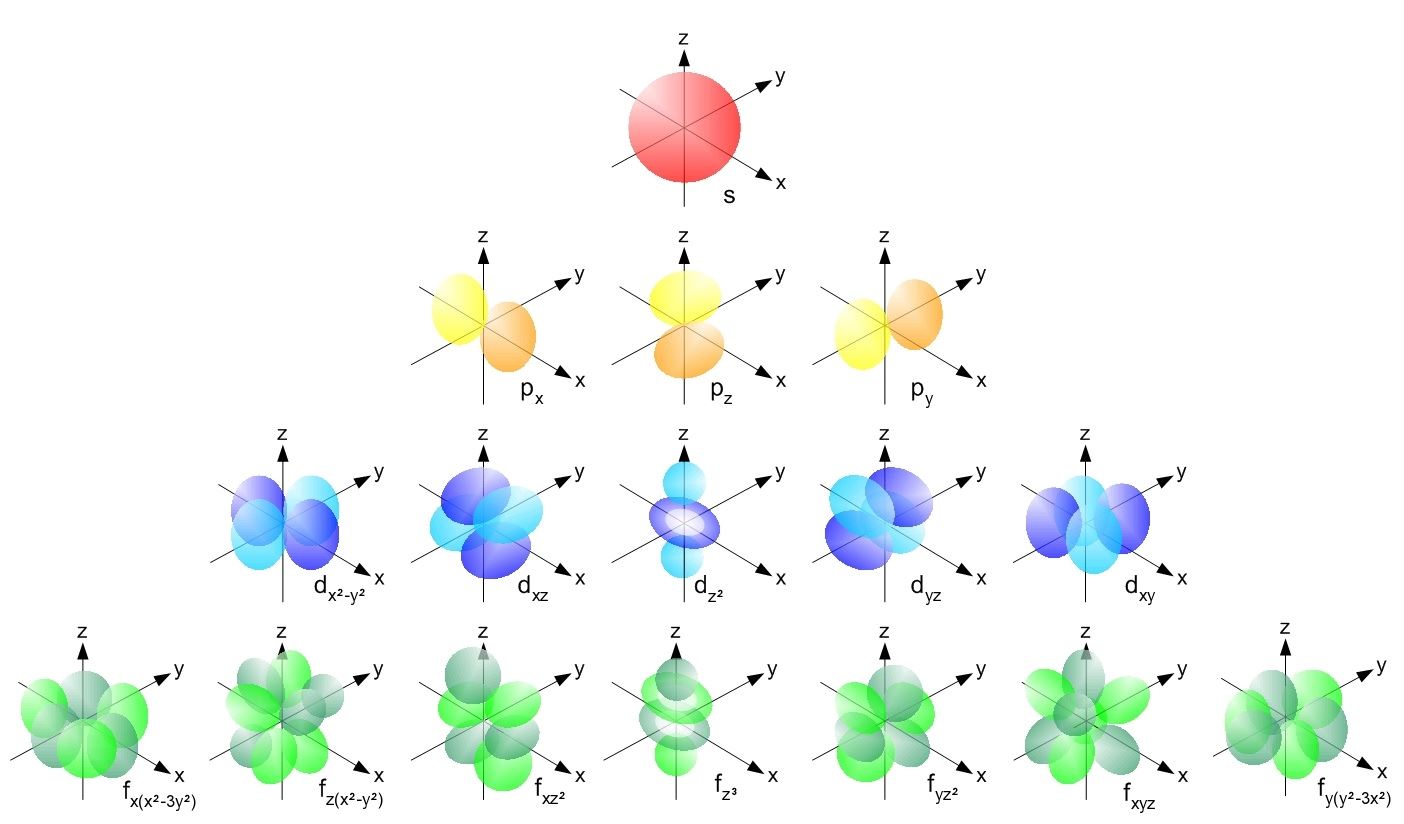CALL 9463138669, ANAND CLASSES–ALL INDIA SAINIK SCHOOL ENTRANCE EXAM COACHING CENTER IN JALANDHAR.

Revision Course : Sainik School Exam Syllabus (Topic Wise GK)Sainik School GK MCQs. Sainik School Coaching Jalandhar. RIMC RMS Coaching Jalandhar. Sainik School Coaching Jalandhar. Sainik School Exam Study Material
We, at ANAND CLASSES, are providing the Study Material for All India Sainik School Entrance Exam for students who want to excel in their studies and ace their final exam.
The three types of cooking methods are dry heat cooking, moist heat cooking, and combination cooking. Each of these methods uses heat to affect foods in a different way.
Revision Course : Sainik School Exam Syllabus (Topic Wise GK)Sainik School GK MCQs. Sainik School Coaching Jalandhar. RIMC RMS Coaching Jalandhar. Sainik School Coaching Jalandhar. Sainik School Exam Study Material
We, at ANAND CLASSES, are providing the Study Material for All India Sainik School Entrance Exam for students who want to excel in their studies and ace their final exam.
1. Dry Heat Cooking

Dry heat cooking works without the presence of any moisture, broth, or water. Instead, it relies on the circulation of hot air or contact with fat to transfer heat to foods. Temperatures of 300 degrees or hotter are used to create browning, a reaction where the amino acids and sugars in food turn brown and create a distinct aroma and flavor. The unique scents of toasted bread or seared meat are both examples of dry heat cooking at work.
Broiling
Broiling works by transferring extremely high heat onto food, usually directed from a radiant located above the food which cooks on one side at a time. Browning can occur very quickly with this method, sealing juices and flavor inside and leaving a crisp exterior. Because this cooking method is fast, it’s helpful to use a timer or check the doneness so foods don’t become burnt or overcooked. In commercial kitchens, broiling can be performed with a salamander or broiler oven.
Best foods for broiling:
- Meats: Broiling works best on thinner cuts of meat, like steaks, pork chops, or hamburger patties. Tender cuts are preferred because the dry heat will quickly evaporate moisture and dry out the meat.
- Poultry: Use chicken or turkey cutlets, breast halves, quarters, and legs in the broiler for flavorful results.
- Fish: Choose thick, sturdy fish, like salmon, that can handle high heat and won’t dry out easily.
- Fruits and Veggies: Broiling can even be used on fruits and vegetables. Try broiling peaches or grapefruit for a unique menu item.
Grilling
Grilling is similar to broiling, in that it uses radiant heat to cook foods quickly. Most commonly, grilling equipment will feature an open grate with a heat source located beneath the food. Flipping is required to cook foods on both sides and grill marks from the hot grate or rack are desirable.
Best foods for grilling:
- Burgers: Ground hamburger meat is moist and cooks up very well on a hot grill. The high heat sears the outside of the patty for delicious charred flavor.
- Meats: The dry heat from grilling will quickly remove moisture from meat so it’s best to choose tender cuts or marinate the meat first. Ribeyes, porterhouses, t-bones, and strip steaks have higher fat content and marbling that produces a succulent grilled steak.
- Poultry: Boneless cuts of chicken work best because they will grill more evenly. Whole chickens can be grilled, but spatchcocking is recommended.
- Fish: Salmon, tuna, and swordfish steaks are sturdy enough for the grill and won’t dry out quickly. It’s possible to wrap fish in foil before placing it on the grates to prevent it from falling through.
Roasting
Roasting is performed inside an oven and uses indirect heat that cooks from all sides for even browning. This method of cooking works more slowly, coaxing flavors out of meats and vegetables. Roasting can be performed at very low temperatures between 200 degrees and 350 degrees Fahrenheit for tougher cuts of meat, or higher temperatures up to 450 degrees Fahrenheit for more tender cuts.
Best foods for roasting:
- Meats: Roasting cooks large cuts of meat slowly and evenly. Prime rib, beef tenderloin, pork butt or shoulder, and pork loin all benefit from roasting.
- Poultry: Whole chickens or turkeys can be placed in a roasting pan or on a rotisserie spit and cooked for several hours for a moist and flavorful product.
- Fruits and Veggies: Roasting is a great way to bring out the best qualities in fruits and vegetables. Grapes, cherries, and tomatoes can be roasted to intensify their flavors. Pumpkin, squash, eggplant, and cauliflower are also excellent candidates for roasting.
Baking
Baking and roasting both use indirect heat to surround foods and cook from all sides. The term roasting is used when cooking meats or vegetables, and baking is used when making bread, rolls, and cakes. Technically, these cooking methods are the same, but baking is usually performed at lower temperatures than roasting.
Best foods for baking:
- Baked Goods: Baking transforms wet dough or batter into a final product with a firm texture. Bread, pastries, and cakes are all baked.
- Pizza: As pizzas are baked in a hot oven, the dough becomes firm, a crust is formed, and the cheese topping melts.
Sauteing
Sauteing is performed over a burner in a hot, shallow pan and uses a small amount of oil or fat to coat food for even browning. This method cooks foods very quickly so it’s best to keep the food moving by tossing or flipping. Saute is a French word that translates to “jump”. To achieve great results with sauteing, make sure the oiled pan is hot before adding any food, don’t overcrowd the pan with too many items, and stir or toss frequently.
Best foods for sauteing:
- Meats: Sauteing cooks quickly, so tender meats work best. Use ground beef, tenderloin, or medallions in a saute pan. Small, uniformly sized cuts of meat brown evenly.
- Poultry: Boneless breasts, strips, or cutlets can be sauteed to sear in flavor.
- Vegetables: Zucchini, squash, and leafy greens can all be sauteed in olive oil or butter. Carrots, celery, and onions can also be sauteed and often make a flavorful base for other dishes.
2. Moist Heat Cooking

As the name indicates, moist heat cooking relies on the presence of liquid or steam to cook foods. This method can be used to make healthy dishes without any added fat or oil. It’s also a great way to tenderize the tough fibers in certain cuts of meat, like beef chuck or brisket. When cooking fibrous vegetables and legumes, moist heat cooking softens the food until it reaches the perfect tenderness. Unlike dry heat cooking methods, moist heat cooking will not produce a browned crust.
Poaching
Poaching is a gentle method of cooking in which foods are submerged in hot liquid between 140 degrees and 180 degrees Fahrenheit. The low heat works especially well for delicate items, and moisture and flavor are preserved without the need for fat or oil.
Best foods for poaching:
- Eggs: Poaching is a common method of cooking eggs that results in a soft, tender egg white and creamy yolk. No oil is needed so it’s more health-conscious than pan frying.
- Poultry: Broth, wine, or aromatics can be used for poaching liquid, which adds flavor to boneless, skinless chicken breasts. The result is tender chicken that can be cubed, sliced, or shredded and added to salads, pasta, or sandwiches.
- Fish: Poaching is a great way to preserve the delicate texture of light fish like tilapia, cod, and sole. A special broth, called court bouillon, is used to add flavor to the fish as it cooks.
- Fruit: Use a sweetened liquid to poach fruits like pears or apples for a unique dessert. The flavor of the fruit is deepened and the texture becomes soft and tender. Any leftover liquid can be used to make a flavored syrup to serve with the fruit.
Simmering
Simmering is also a gentle method of cooking foods but uses higher temperatures than poaching, usually between 180 degrees and 205 degrees Fahrenheit. This temperature range lies below the boiling point and produces tiny bubbles. To achieve a simmer, first bring water to the boiling point and then lower the temperature.
Best foods for simmering:
- Rice: Simmering produces cooked rice with a light, fluffy texture. Using water that is boiling or too hot causes the rice to become sticky and dry.
- Meats: Choose tougher cuts of meat that will release fat and collagen as they simmer, like chuck roast.
- Soups and Stocks: Because simmering releases the fat and proteins from meat, it produces a rich flavorful broth that can be used in soups or stews.
- Vegetables: Tough root vegetables like potatoes and carrots are cooked to the perfect texture with gentle simmering.
- Grains: Grains like quinoa, oats, or millet can be simmered until they reach a soft edible texture. Hot cereal is made by simmering grains until most of the water has evaporated, creating a smooth porridge.
- Legumes: Dried beans and legumes are simmered to achieve a soft, edible texture. Some types of beans, like lentils, cook quickly, while others take several hours of gentle simmering to become fully cooked.
Boiling
This cooking technique involves submerging food in water that has been heated to the boiling point of 212 degrees Fahrenheit. The boiling water produces large bubbles, which keep foods in motion while they cook. The expression slow boil means that the water has just started to produce large, slow-moving bubbles but is not quite heated to the boiling temperature. A full boil occurs at the boiling point and results in fast-moving, rolling bubbles. Steam is also released from the water as it boils.
Best foods for boiling:
- Pasta: Pasta may come to mind as one of the most commonly boiled foods. The hot water cooks the pasta quickly so that it can be removed from the water before starches break down, preventing a mushy texture.
- Eggs: Boiling eggs in their shell produces hard- or soft-boiled eggs. The texture of the yolk can range from firm to creamy, depending on the cook time.
- Vegetables: Tough root vegetables like potatoes and carrots will cook more quickly in boiling water but it’s recommended to test their tenderness with a fork so they don’t overcook.
Steaming
In steaming, water is boiled continuously to produce a steady amount of steam. The steam surrounds foods and cooks evenly while retaining moisture. Steaming can be performed in a few different ways. For high volume kitchens, a commercial steamer or combi oven is the most efficient. Other methods of steaming include using a pot and steamer basket, using a microwave, or wrapping foods in foil so they can steam in the oven.
Best foods for steaming:
- Vegetables: Most vegetables can be steamed with great results. Sturdy veggies like beets, carrots, and potatoes will steam for longer than delicate foods like leafy greens.
- Fish and Shellfish: For more flavorful results, broth or wine can be used instead of water. Fish stays tender and shellfish like clams, mussels, lobster, or crabs are cooked inside their shells.
- Desserts: Some types of desserts are steamed rather than baked, producing a moist, silky texture. Creme brulee, flan, and panna cotta are all custards made by steaming.
- Tamales: Tamales are a popular food made by steaming masa, a dough made of ground corn, and fillings inside a corn husk packet. The steam makes the corn dough tender and moist.
3. Combination Cooking

Combination cooking utilizes both dry and moist cooking methods. Foods are cooked in liquids at low heat for an extended period of time, resulting in a fork tender product. This technique works with the toughest cuts of meat, gradually breaking down fibers until they melt into the liquid.
Braising
During braising, foods are first seared in a hot oiled pan then transferred to a larger pot to cook in hot liquid. The foods are only partially submerged in simmering water, broth, or stock. Using low heat, the foods soften over an extended cook time and the liquid becomes reduced with intensified flavors. Braising is a great method for producing fork tender meats that fall off the bone.
Best foods for braising:
- Meats: Braising is most commonly used with cheaper, tougher cuts of meat because it softens and tenderizes the muscle fibers. Choose pork shoulder, chuck roast, or lamb shank.
- Vegetables: Vegetables can be braised along with meat to add more flavor, or they can be braised alone as their own dish. Root vegetables like potatoes, beets, and turnips are softened during braising. Celery and fennel also respond well to braising, absorbing liquid but maintaining a firm texture.
- Legumes: Lentils, chickpeas, and green beans can be braised in broth or wine for a texture that’s soft but not mushy.
Stewing
The key difference between stewing and braising is that foods are completely submerged in hot liquid while stewing instead of being partially submerged. Smaller cuts of meat are used in a stew, but the method of slow cooking at low heat is the same. As the stew cooks, fibrous vegetables break down and fat and collagen from the meats melt away. The result is a thick, flavorful gravy filled with tender bites of meat and soft vegetables.
Best foods for stewing:
- Meats: Meats that are rich in collagen and fat do well in a stew pot. Avoid lean cuts and choose brisket, oxtail, or chuck roast.
- Vegetables: Vegetables add depth to your stews. Onions, carrots, potatoes, and celery are common choices for building a stew, but also consider parsnips, turnips, or rutabaga.
Here, we will discuss the methods of cooking and food preservation. Varieties of foods are available for varieties of creatures on Earth.
Different types of animals eat foods in a different way. Cow, goat eat raw vegetables but human beings can’t digest raw vegetables.
Some vegetables like cucumber, onion, tomato, etc can be eaten as raw but some raw vegetables which are hard to digest for human beings are required to be cooked.
Cereals and pulses are also can’t be eaten as raw. After boiling the cereals and pulses, it becomes soft and easy to digest for human beings whereas birds can eat cereals and pulses as raw.
While cooking the vegetables, ginger, garlic, turmeric powder, salt, etc are used as a spice which helps in increasing the test of the foods.
Advantages of eating cooked foods
There are some advantages of eating the cooked foods: It
- becomes soft and people can easily digest it.
Several methods of cooking
There are several methods of cooking:
Food Preservation
Many foods are coming from far distances. Some foods are available here easily but some are not due to the environment. Hence, it becomes necessary to bring that food from other locations. For this, it takes 2-3 days’ time to get that food.
In 2-3 days, that food may begin to spoil. Hence, to keep the food edible condition the preservation of food is very essential. The presence of bacteria, yeasts, molds in the surrounding that causes the food spoiled need to be removed from the food.
Reason for being spoiled of the food
Reason for being spoiled of the food are:
- Contamination by microorganisms, insects
- Degradation by endogenous enzymes
- Oxidation of some constituents of foods
Food spoilage occurs due to the presence of bacteria and fungi which are one type of microorganism and it causes food-borne illness.
Bacteria
Different types of bacterias grow at different temperatures. Depending on temperatures, bacterias are divided into three categories- thermophiles, mesophiles, and psychrotrophic.
Here, the amount of pH by which the acidity level of water is measured plays an important role. Generally, a neutral environment (pH=7) is responsible for the growth of bacterias.
In the presence of water, bacteria grows very fast. The availability of water is termed as Water activity.
Water activity =(Vapor pressure at the food/ vapour pressure of pure water) at a specific temperature.
Its value lies between 0 and 1. The absence of water is denoted by water activity as zero and the presence of it is denoted by water activity as one. Water activity above 0.9 is suitable for the growth of bacterias.
Fungi
Yeast and molds which are also responsible for the spoilage of food are the two types of fungi. The acidic environment (PH<7) helps fungi to grow.
A water activity of more than 9 is also required for the fungi so that it can grow like bacterias.
If we can apply heat or remove water from the food, food will be safe from bacteria and fungi and thus it will refrain from the spoilage which we can use for a few days.
Different ways of preserving the food:
All the above factors compel us to preserve the food. There are different ways of preserving food and they are:
- Drying
- Refrigeration (Reducing the temperature of the food)
- Freezing (Lowering the temperature below 0 degrees C.)
- Fermentation
- Canning (Storing the food in an airtight container)
- Pasteurization (Applying heat to kill the microorganisms)
- Irradiation
- Addition of chemicals
Bacteria can’t grow without the presence of water. We should dry the pulses and cereals before preserving them as sunlight kills the germs. If there are insects within the rice, the rice should be kept in front of the sunlight.
1. Do you find that all living beings need the same kind of food?
Solution:
No, all living beings do not need the same kind of food. Some animals eat plants as food, and they are called herbivores. Some animals feed on other animals, and they are called as Carnivores. Some others eat food from plant sources as well as animals, and such living beings are called omnivores.
2. Name five plants and their parts that we eat.
Solution:
Brinjal- Fruit
Groundnut- Seed
Potato- Stem
Spinach- Leaves
Beetroot- Roots
3. Match the items given in Column A with that in Column B
| Column A | Column B |
| Milk, Curd, Paneer, Ghee | Eat other animals |
| Spinach, Cauliflower, carrot | Eat plants and plant products |
| Lions and tigers | Are vegetables |
| Herbivores | Are all animal products |
Solution:
| Column A | Column B |
| Milk, Curd, Paneer, Ghee | Are all animal products |
| Spinach, Cauliflower, carrot | Are vegetables |
| Lions and tigers | Eat other animals |
| Herbivores | Eat plants and plant products |
4. Fill up the blanks with the words given: herbivore, plant, milk, sugarcane, carnivore
(a) Tiger is a ____________________ because it eats only meat.
(b) Deer eats only plant products and so, is called ______________.
(c) Parrot eats only _________________ products.
(d) The ________________ that we drink, which comes from cows, buffaloes and goats is an animal product.
(e) We get sugar from ___________________.
Solution:
(a) Tiger is a carnivore because it eats only meat.
(b) Deer eats only plant products and so, is called herbivore.
(c) Parrot eats only plant products.
(d) The milk that we drink, which comes from cows, buffaloes and goats is an animal product.
(e) We get sugar from Sugarcane.
1. Name the major nutrients in our food.
Solution:
Major Nutrients in our food are Carbohydrates, Proteins, Lipids, Vitamins, Minerals and dietary fibers.
2. Name the following:
(a) The nutrients which mainly give energy to our body.
(b) The nutrients that are needed for the growth and maintenance of our body.
(c) A vitamin required for maintaining good eyesight.
(d) A mineral that is required for keeping our bones healthy.
Solution:
a) Carbohydrates
b) Proteins and minerals
c) Vitamin A
d) Calcium
3. Name two foods each rich in:
(a) Fats RIMC RMS Coaching Jalandhar
(b) Starch RIMC RMS Coaching Jalandhar
(c) Dietary fiber RIMC RMS Coaching Jalandhar
(d) Protein RIMC RMS Coaching Jalandhar
Solution: RIMC RMS Coaching Jalandhar
a) Cream, Butter RIMC RMS Coaching Jalandhar
b) Rice, Wheat RIMC RMS Coaching Jalandhar
c) Whole grains, raw vegetables RIMC RMS Coaching Jalandhar
d) Milk, Soya bean RIMC RMS Coaching Jalandhar
4. Tick (√) the statements that are correct.
(a) By eating rice alone, we can fulfill nutritional requirement of our body. ( )
(b) Deficiency diseases can be prevented by eating a balanced diet. ( )
(c) Balanced diet for the body should contain a variety of food items. ( )
(d) Meat alone is sufficient to provide all nutrients to the body. ( )
Solution: RIMC RMS Coaching Jalandhar
(a) By eating rice alone, we can fulfill nutritional requirement of our body. ( )
(b) Deficiency diseases can be prevented by eating a balanced diet. (√ )
(c) Balanced diet for the body should contain a variety of food items. (√ )
(d) Meat alone is sufficient to provide all nutrients to the body. ( )
5. Fill in the blanks.
(a) ______________ is caused by deficiency of Vitamin D.
(b) Deficiency of ______________ causes a disease known as beri-beri.
(c) Deficiency of Vitamin C causes a disease known as ______________.
(d) Night blindness is caused due to deficiency of ____________ in our food.
Solution:
(a) Rickets is caused by deficiency of Vitamin D.
(b) Deficiency of Vitamin B1 causes a disease known as beri-beri.
(c) Deficiency of Vitamin C causes a disease known as Scurvy.
(d) Night blindness is caused due to deficiency of Vitamin A in our food.
ANAND CLASSES offers ALL INDIA SAINIK SCHOOL Entrance Exam Coaching in Jalandhar. ANAND CLASSES is the prevalent establishment in the Jalandhar for ALL INDIA SAINIK SCHOOL Entrance Exam. It is surely famous for its selective class management classes and productive Best ALL INDIA SAINIK SCHOOL Entrance Exam coaching institute in Jalandhar. sainik School study material
The faculty at ANAND CLASSES – ARMED FORCE ACADEMY is highly qualified and vastly experienced in successfully coaching students for ALL INDIA SAINIK SCHOOL Entrance Exam.
ANAND CLASSES is known as leading institute for preparation of ALL INDIA SAINIK SCHOOL Entrance Exam Coaching in Jalandhar. We at ANAND CLASSES provide coaching for ALL INDIA SAINIK SCHOOL Entrance Exam from the past 15 years. The ALL INDIA SAINIK SCHOOL Entrance Exam Coaching Center in Jalandhar, Punjab.
Cooking & Food Preservation Techniques|Sainik School Coaching Jalandhar|Anand Classes|@9463138669
Shape of Earth & Gravitation|Anand Classes|@9463138669|Sainik School Coaching




















